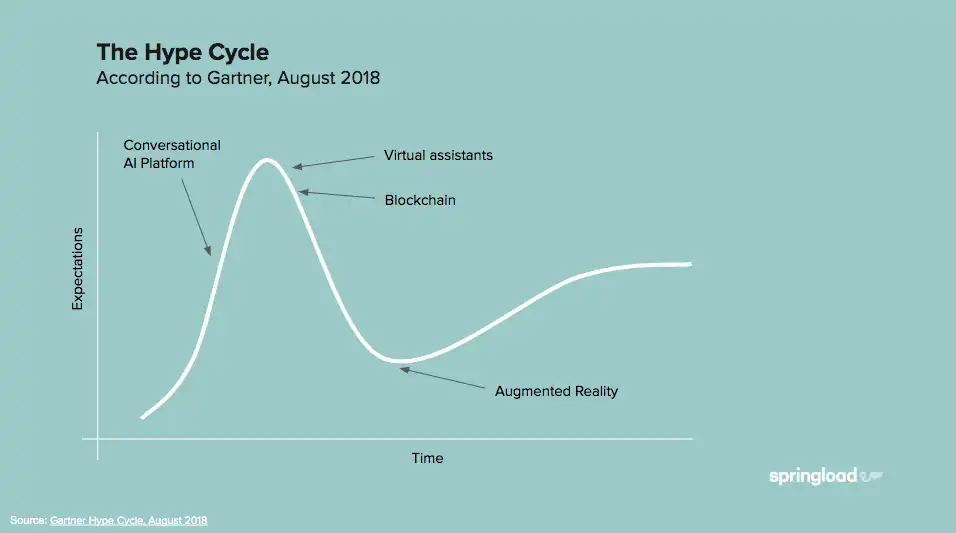
Experts in their respective fields, Lauren Skogstad (Experience Director) and Matt Bilson (Head of Technology) gave a talk at Techweek 2019. Starting by defining what constitutes ‘emerging tech’, they provided an approach to applying human-centred design principles to uncharted, hype-driven, or emerging tech.
They used the ACC voice assistant project from Experience Week 2018 as an example of how we applied human-centred design principles to interactive voice technology. Watch the full talk below, or continue reading about some of the details of the approach:
Watch the full talk at Techweek 2019
So, how might we design with emerging technologies while keeping customers at the heart?
It starts with collaboration
When designing with emerging technologies, collaborative, cross-functional teams are more important than ever. Designers, developers, content designers, project managers – everyone across the organisation must be able to work together effectively and understand each other's roles.
Shared knowledge delivers robust solutions
Design teams may not understand or have used the new technologies before. This clouds their ability to see what design opportunities and limitations there are. But by working with technical experts, they can better understand the possibilities.
Conversely, emerging technologies are often largely uncharted or there are few use-cases to draw from. So tech teams can get a better understanding of how users might respond through collaboration with human-centred design practitioners.
Collaboration was key during the design sprint with ACC
A team of one developer, two experience designers, and a member of the ACC team worked together to discover that voice is best used when it provides a shortcut to a solution. Rather than arranging an appointment using an online form, the process could be completed through a single conversation.
Define the motivation
Tech-first or problem-first?
Human-centred design typically starts with the user. A human problem in need of a solution is identified, further explored, and then a solution is designed. Deciding which technology to use generally comes later in the process. This is known as the problem-first approach.
But sometimes a client will start off wanting to use a particular technology before the actual problem is identified. This is the tech-first approach.
“We want to build a chatbot” they might say – we often hear this when a technology is peaking on the hype cycle.

Tech-first can be a useful approach
It doesn’t look like a human-centred approach to design, but that doesn’t mean it’s wrong. Organisations may be looking to explore a particular technology for the purpose of R&D or to portray their brand as modern and innovative.
Decide on your approach at the beginning
While it has its merits, starting tech-first means that it’s incredibly important to acknowledge this as a team and play to its strengths. And even more important to find an appropriate use-case for the technology. Approaching a project tech-first without acknowledging it from the outset can lead to wasted budget and resources.
Design for people
Whether you’re approaching a project tech-first or problem-first, user research and testing with real people should always be the foundation. Emerging technologies like artificial intelligence and machine learning are useful when solving problems, but they cannot find the problems to solve.
Interviews, surveys, and customer support tickets are all crucial for discovering and understanding the contextual problems that only humans truly understand.
If you aren’t aligned with a human need, you’re just going to build a very powerful system to address a very small or perhaps non-existent problem
Designing ACC Voice with people, for people
During the ACC Voice project we discovered early in the research phase that users found it strange – and even uncomfortable – when the machine sounded too much like a human. Instead, people wanted the machine to sound like a machine – even though the conventional goal of AI would be to get as close to human as possible.
Design an approach
Don’t expect a machine to solve everything. While artificial intelligence (AI) tools and approaches – like machine learning and deep learning – are redefining what’s possible with technology, they are still not able to solve problems for you. You need to design an approach to use them.
The idea that there’s some singular intelligence that understands all things and can generalise and transfer knowledge from context to context – nope, not even close.
The UX of AI
With a more strategic approach and human input, emerging technology can be leveraged effectively and matched to particular problems.
Design for augmentation, not automation
Design to complement humans. This is generally the most effective way of designing with emerging technology. For example, the design of the Hemingway App helps users improve their writing, but still leans on the user for context and creativity that AI cannot pick up on.
A version of the Hemingway App that automates changes rather than suggesting them might seem faster, but it would miss out on small nuances that the writer might have intended to leave in. Presenting suggestions – rather than automating actions – also helps mitigate against incorrect or somewhat uncertain predictions or decisions from machine learning. Human-centred design for emerging technology should play to the strengths of both humans and machines.
Prototype and test
So how do you prototype emerging or never-used-before technology? There are ways to test without it becoming too expensive.
Wizard of Oz prototyping
The Wizard of Oz technique is a lean method for prototyping. A ‘fake it ‘til you make it’ approach where the technology or concept is imitated to understand how users will react.
Prototyping for the ACC Voice project
With a lean budget and only a week to build and prototype, the Wizard of Oz technique was perfect for the ACC Voice project. To test the voice interaction with users, we placed a picture of a Google Home device in front of the user. When they conversed with the picture, a member of the team who was out of sight would generate the response as if it were coming from the device.
And that's a wrap
So, to recap, the approach to designing for emerging technology involves:
- Collaboration
- Define the motivation
- Design for people
- Design an approach
- Prototype and test
Check out the full talk at Techweek 2019 for extra insights, questions from the audience, and the all-important human nuance from Matt and Lauren.
Design and innovate using emerging technology
If you’ve got a problem you think an emerging technology can solve – or you just want to experiment using cutting edge technology – we can help make it happen. Get in touch today to speak to us about your innovative ideas.
Get in touch
Let’s make the things that matter, better.
Email: hello@springload.co.nz
Phone: +64 4 801 8205